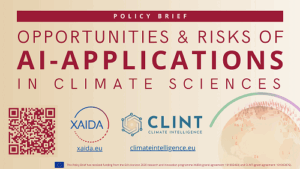GIEC and climate sensibility: what’s the balance?
Jean-Louis Dufresne is a researcher at LMD-IPSL and lead author of the IPCC chapter on radiation budget, feedbacks and climate sensitivity. The main objective of this chapter is to determine the various quantities that directly influence the magnitude of the warming of the Earth’s surface in response to disturbances, whether natural or due to human activities. To quantify the magnitude of these perturbations, we need to determine their radiative forcing. Then, we need to look at how the climate system reacts and in turn modifies the energy balance: this is known as climate feedbacks.
The Earth exchanges energy with the sun and the rest of the universe. And the balance of these exchanges ─ the radiation balance ─ is null if we consider its average over long periods of time (hundreds to thousands of years). In recent decades these exchanges have been increasingly modified by human activities. The rise in concentration of greenhouse gases makes it more difficult for the Earth to cool down and leads to its warming: it is a positive forcing. The main culprits behind the warming observed over the past 60 years are the rising concentrations in carbon dioxide (CO2) and methane (CH4). Human activities are also increasing the amount of aerosols in the atmosphere. These small airborne particles reflect some of the sun’s radiation, which reduces the amount of solar energy absorbed by the Earth and leads to its cooling: it is a negative forcing. Today, it is estimated this increase in aerosols reduces the warming caused by the increase in greenhouse gases by about one third.
The magnitude of these forcing is quantified by a quantity called radiative forcing. It represents how much the Earth’s radiation balance would change in the purely theoretical situation where there would be a disturbance, such as a change in greenhouse gases or aerosols, but where the climate does not change. Between the pre-industrial era (1750) and our time (2019), the total radiative forcing is estimated to be 2.7W/m-2. This is mainly 3.8Wm-2 due to the increase in greenhouse gases and -1.1Wm-2 due to the rise in aerosols. The sum of other forcing, for example land use change or aircraft contrails, being close to zero.
All forcing lead to an imbalance and thus to a change in the Earth’s temperature, climate and ultimately the Earth’s energy balance, until this balance is zero and a new equilibrium is reached. Variations in the energy balance due to changes in climate when the temperature change are called climate feedbacks. They can be due to physical, biogeophysical or biogeochemical processes and directly influence the magnitude of warming. This IPCC report confirms that the increase in water vapour with temperature is the most important feedback contributing to warming. The change in cloud distribution is the feedback that remains the most uncertain, even though doubts have been reduced in AR6 compared to AR5.
« Improved knowledge of climate processes, paleoclimate evidence and the response of the climate system to increasing radiative forcing gives a best estimate of equilibrium climate sensitivity of 3°C with a narrower range compared to AR5 » – IPCC Summary for Policy Makers
Climate sensitivity is defined as the warming at the Earth’s surface in response to a doubling in atmospheric CO2 concentration relative to the pre-industrial era, once the new point of equilibrium is reached. This sensitivity has been estimated with an uncertainty that has been almost cut in half compared to the previous IPCC report, AR5, thanks to a combination of information from models, observations and paleoclimates, enabled by a better understanding of climate processes. Climate sensitivity is now estimated to be around 3°C, with a range of 2.5°C to 4°C. This improved determination represents an important advance: it allows a more accurate estimate of the response of the climate system to human perturbations over long time scales and in particular for projections to the end of the 21st century.
What is the IPCC ?
Created in 1988 by the World Meteorological Organization (WMO) and the United Nations Environment Programme (UNEP), the objective of the IPCC is to provide governments at all levels with scientific information that they can use to develop climate policies. IPCC reports are also a key input into international climate change negotiations. The IPCC is an organization of governments that are members of the United Nations or WMO. The first working group (WG1) of the six assessment report (AR6) published its assessment on the physical science basis of our climate on the 9th of August 2021. It is the work of 234 international researchers that have analysed the entirety of science literature on the subject. The two following working groups on the AR6 will render their assessment in 2022 respectively on impacts, adaptation and vulnerability and finally mitigation.
To go further
Find out more about the conversion of greenhouse gases to CO2 equivalent with Olivier Boucher and Katsumasa Tanaka : Lessening the cost of strategies to reach the Paris Agreement
Discover why clouds remain a substantial uncertainty with Claudia Stubenrauch: Understanding the effect of clouds on climate






